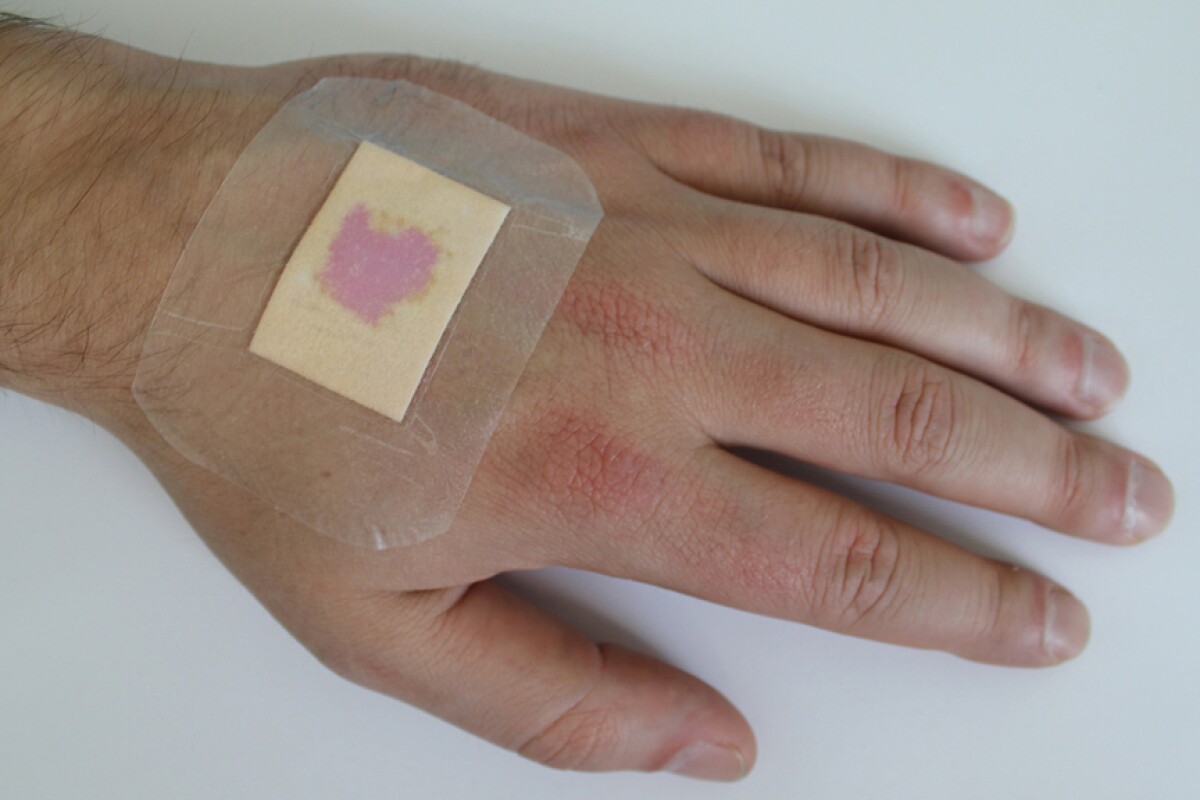Wounding yourself can be bad enough, but having to regularly remove the dressing to check for infection can be painful and can also compound things by exposing the wound and giving germs the chance to enter. Now researchers have developed a new material for dressings and plaster that changes color if an infection arises, making it possible to check wounds without changing the dressing.
The scientists at the Fraunhofer Research Institution for Modular Solid State Technologies EMFT in Munich have developed an indicator dye that reacts to different pH values, and integrated it into a dressing and a plaster. Healthy skin and healed wounds usually show a pH value of or below 5. If this value increases, shifting from the acid into the alkaline range, it indicates complications in the healing of the wound.
“If the pH value is between 6.5 and 8.5 an infection is frequently present and the indicator color strip turns purple, “ says Dr. Sabine Trupp, a scientist at the EMFT. In this way the intelligent dressing material makes it possible to regularly check wounds from the outside without disrupting the healing process.
In creating the color control strip, the researchers had to ensure the dye remained chemically stable when bonded to the fibers of the dressing material or the plaster to ensure it doesn’t get into the wound. They also had to ensure the indicator showed a clear change in color and reacted sensitively in the right pH range.
The researchers have already produced a prototype of the dressing and they say initial tests have proved successful. They are now looking to take the idea further with plans to integrate optical sensor modules into the dressing to measure the pH value and indicate the results on a reader unit. This would allow the pH value to be read off precisely, providing information about how the wound is healing.
In the meantime, the EMFT researchers will test the dressing in a hospital environment at the University of Regensburg’s dermatology clinic. Dr. Trupp and her team are now also looking for an industrial partner to produce the dressing commercially.





